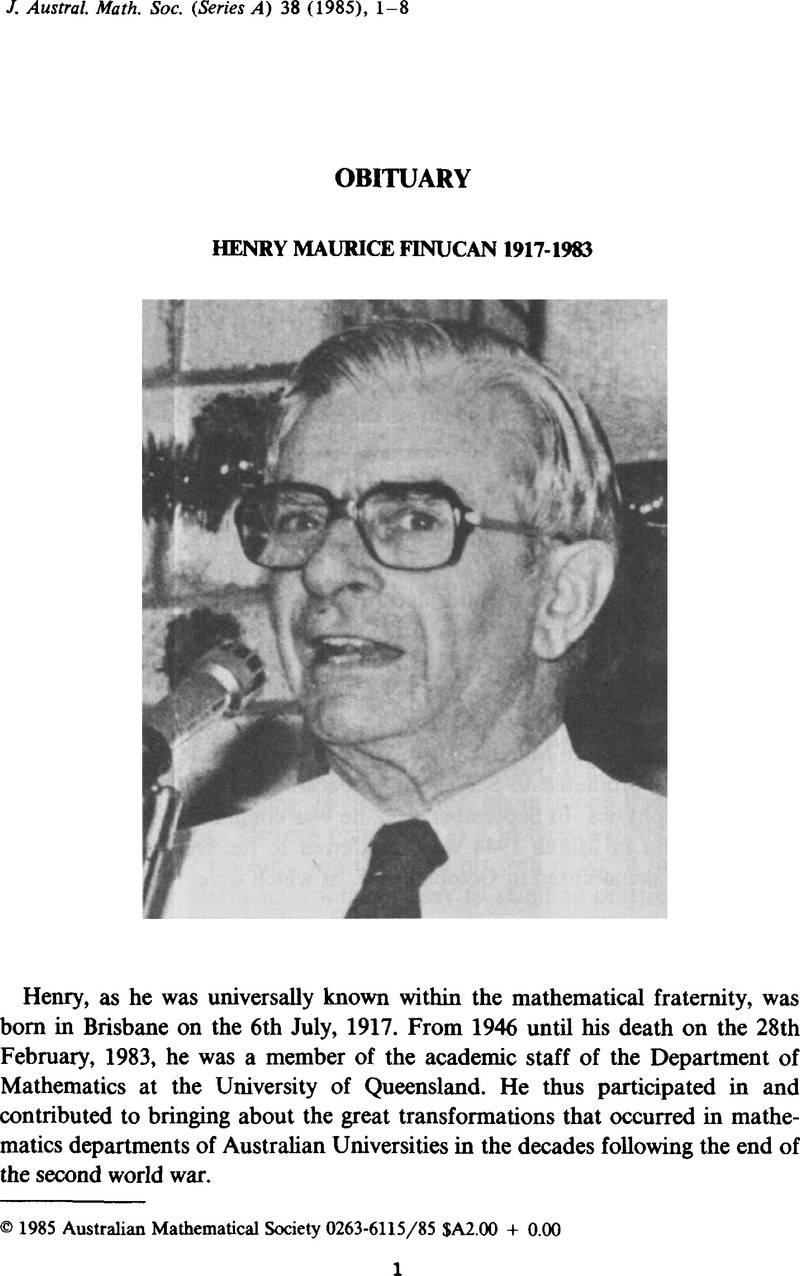No CrossRef data available.
Article contents
Henry Maurice Finucan 1917–1983
Published online by Cambridge University Press: 09 April 2009
Abstract
An abstract is not available for this content so a preview has been provided. As you have access to this content, a full PDF is available via the ‘Save PDF’ action button.

- Type
- Obituary
- Information
- Copyright
- Copyright © Australian Mathematical Society 1985
References
[1]‘The mode of a grouped distribution’, J. Roy. Statist. Soc. A 117 (1954), 459.CrossRefGoogle Scholar
[4]‘The relative position of the two regression curves’, J. Roy. Statist. Soc. B 35 (1973), 316–322.Google Scholar
[5]‘Moments without tears in simple random sampling from a finite population’, Biometrika 61 (1974), 151–154 (with Galbraith, R. F. and Stone, M.).Google Scholar
[7]‘The silver anniversary of an optimization result in rolling-mill practice’, Operations Res. 24 (1969), 373–378.Google Scholar
[9]‘True odds for a certain game’, J. Recreational Math. 7 (1974), 283–285 (with Jones, A. S.).Google Scholar
[10]‘Posterior precision for non-normal distributions’, J. Roy. Statist. Soc. B 33 (1971), 95–97.Google Scholar
[11]‘“Combinations of events” made easy’, in Combinatorial Maths. III: Proceedings 3rd Australian Conference Combinatorial Maths., pp. 105–115 (Lecture Notes in Math. 452 (1975), Springer-Verlag, Berlin).Google Scholar
[12]‘Some elementary aspects of the Catalan numbers’, in Combinatorial Maths. IV: Proceedings 4th Australian Conference Combinatorial Math., pp. 41–45 (Lecture Notes in Math. 560 (1976), Springer-Verlag, Berlin).Google Scholar
[44]Some results in the theory of mass systems (A study in “calculus-dodging”), 34 (1950), 19–25.Google Scholar
[45]A slide rule approximation to the factorial function of a positive fraction, 50 (1966), 31–32.Google Scholar




